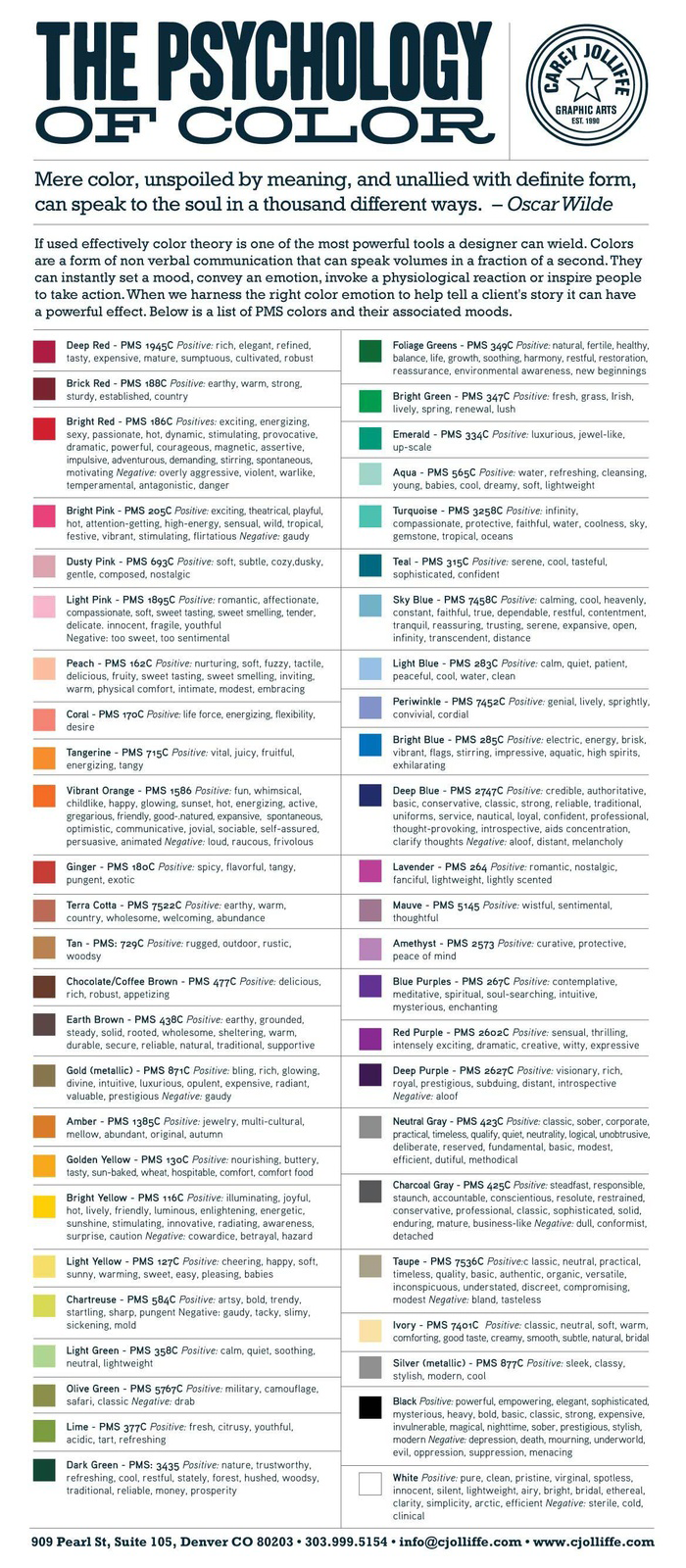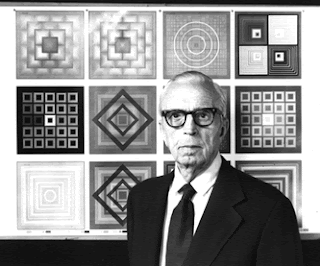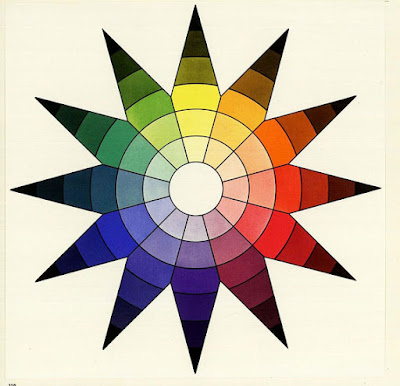One of my favorite charts is Carrie Jollife Graphic Design Psychology of color chart (figure 1). I think they do a really good job of a broad description of each color and what it typically means to people.
 |
| Figure 1: Jolliffe Psychology of Color |
Picking a color isn't a matter of it's your favorite color for your
area, or if it matches your recent office supply addiction (we all have one).
It is truly what makes you feel most productive and something that's not
distracting or stressing. Often, art therapists will sit with a client and talk
about the colors they surround themselves on a daily basis. What colors you
see the most throughout the day? I know I see a lot of blue and pink when I
first wake up, I work in an industry driven by orange, and my school is often
white grey and black until I walk outside where I am bombarded with blues and
greens.
I also think that, although color can really affect your daily life, it is important to understand that there are multiple different types of art mediums. Some are messy and less practical while others can be implemented in your daily life. I like the idea of using art therapy for your workspace with the idea of color therapy and calming techniques but understand some people don't stay in one place for their jobs, those are often the most stressful. There are a variety of art mediums used during art therapy. We are also finding new ways to use art mediums to help our clients as well. This may be an alternative route for the stressed person who doesn't have a designated workplace, or doesn't stay in the office for long periods of time.
Surrounding yourself with the right colors really can help relieve stress as it comes, with calming colors or productive colors
surrounding you it is a pre-emptive strike to combat stress or stressors you
may find yourself dealing with on a daily basis!
References
Jolliffe, C. (n.d.). Carey Jolliffe Graphic Arts. Retrieved September 23, 2016, from http://cjolliffe.com/
Slaughter, J. (2016, June 21). Art therapy. Retrieved September 23, 2016, from http://www.counselling-directory.org.uk/art-therapy.html




